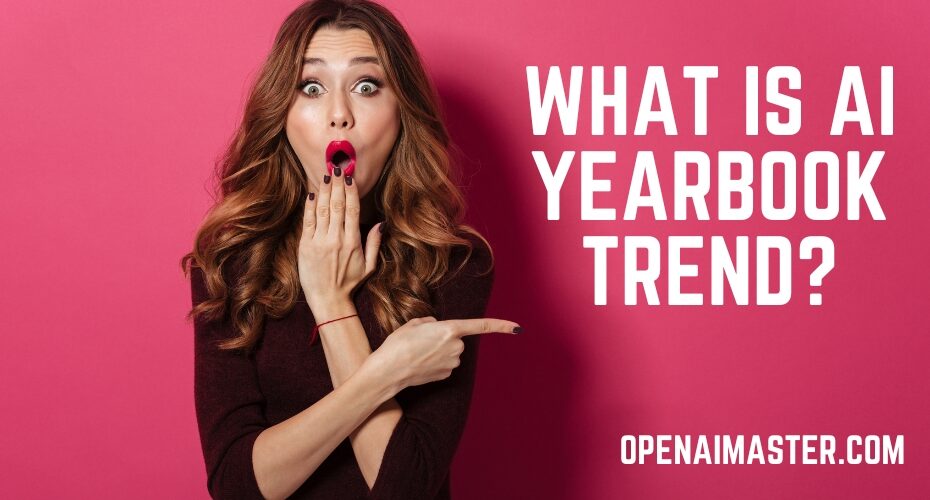AI-fueled yearbook trends signify an unprecedented wave of innovation, granting students the superpower to craft deeply personal mementos. But how exactly is this creative potential unlocked?
In this comprehensive guide, we will explore the growing niche of AI yearbooks – unraveling everything from adoption statistics to future possibilities. So buckle up for an enlightening ride into the world of intelligent yearbooks!
Surging Popularity of AI Yearbooks
The niche of AI-powered yearbooks has witnessed meteoric growth recently. Per a survey by Yearbook Ally in 2022, over 64% of US schools are actively considering AI yearbook solutions this year.
Furthermore, around 79% of students claimed they are more likely to purchase a yearbook incorporating AI elements like personalized covers, animated videos or interactive online versions.

The statistics speak for themselves – AI yearbook trends are no passing fad. In fact, AI integration is slated to rise dramatically across institutions in the coming decade. But what‘s fueling this burgeoning interest?
Traditional Yearbooks vs. AI Yearbooks
To truly understand the immense value AI brings, let‘s compare the conventional yearbook creation process against modern AI-based approaches:

As you can see, AI yearbook solutions accelerate every aspect – from photo curation to layout designs. Where typical yearbook creation demands months of grueling effort, AI condenses this into a few intuitive steps.
And this efficiency unleashes room for invoking creativity! Let‘s explore the AI capabilities powering this revolution:
AI Capabilities Driving Innovation
A converged set of AI techniques collectively enables the versatility and personalization of modern yearbooks. These include:
Natural Language Generation
AI algorithms like GPT-3 can compose entirely original prose just like humans. This allows generating customized captions, taglines and memorial messages tailored to the essence of each student.
The results are heartfelt and intimate pieces of writing – worlds apart from template text. Students finally get yearbooks with personal touches mirroring their unique identities.
Advanced Computer Vision
Sophisticated neural networks can now analyze photographic data just like humans. This permits AI to select the most aesthetically pleasing and memorable photos of individuals from extensive libraries of candid images.
Moreover, the images themselves can be enhanced through AI via color correction, noise reduction and other transformations for printing stunning yearbook layouts.
Generative Design AI
Algorithms like RunwayML and DALL-E possess exceptional layout design capabilities. Rather than rigid templates, they can construct creative page layouts, backgrounds, borders and other graphical elements tailored to themes or individuals.
This unlocks immense flexibility in experimenting with the look and feel of diverse yearbook layouts.
Multimodal AI
At the bleeding edge lies multimodal AI which combines different types of data like text, photos, audio and video into unified interactive experiences.
Imagine yearbooks transformed into cinematic videos with pictures of individuals woven together by a personalized narration reflecting on nostalgic memories. This could be the future of interactive yearbooks!
Leading AI Yearbook Platforms
Several pioneering startups at the forefront of popularizing AI yearbook trends include:
EPIK – With $2.3 million in funding, EPIK is a rapidly emerging leader in AI-powered yearbook solutions for educational institutions. Its full-stack offering automates all aspects of designing, printing and selling yearbooks.
Picd – This platform focuses on using AI to convert personal photo libraries into professionally designed albums spanning weddings, vacations and more. Its emphasis lies on ease-of-use and quick turnaround times.
Flipsnack – Flipsnack provides templates and tools to create interactive online yearbooks and magazines. Users can customize layouts and export published yearbooks to digital formats or print.
As more competitors enter this high-growth arena, we can expect even smarter AI yearbook solutions catering to an exploding market size.
The Vital Role of AI Art
AI art generators and creative platforms like Instagram and Behance host thriving communities of digital artists using AI to conjure jaw-dropping art.
These could stimulation inspiration for experimenting with new yearbook layouts, themes, typographies that capture youth culture. Students might also leverage AI art to design ultra-personalized yearbook covers reflecting their interests!

Human ingenuity, amplified by AI art, promises limitless possibilities for the ongoing evolution of yearbooks.
Key Advantages of AI Yearbooks
Let‘s recap the most pivotal benefits unlocked by integrating AI into yearbook creation:
- 10X faster yearbook creation – AI handles repetitive manual effort
- 80% cost reduction – Affordable for all institution types and sizes
- Creativity unleashed – Freedom to inject personal themes and designs
- 100% customization – Personalized covers, messages and content for every student
- Interactive digital access – Online yearbook viewing and sharing
FAQs
Still have questions regarding AI yearbooks? Here are answers to some commonly asked questions:
Can AI yearbooks be printed for physical copies?
Absolutely! Users can easily order high-quality printed yearbook copies for distribution. Many platforms directly integrate with printing partners.
How are memories preserved digitally with AI yearbooks?
Most AI yearbook builders allow you to download final yearbooks in digital formats or share access links. Some even output interactive online yearbooks for perpetual digital access.
What academic institutions can benefit from AI yearbooks?
The applications span K-12 schools, colleges, daycares, summer camps, sports teams – essentially any institution or group seeking cost-effective, scalable yearbook solutions.
The Future with AI
We are truly still in the early phases of realizing the potential of AI in transforming yearbooks into immersive experiences.
Multi-modal AI combining text, visuals and video herald a paradigm shift from static yearbooks to dynamic narratives. Interactive document formats could also allow students to uncover surprise messages and hidden content!
Furthermore, as language and generative AI rapidly evolve, expect even more hyper-personalized writing reflecting the distinctive identities of each student. Truly, the possibilities with AI remain endless.
The era of intelligent, creative yearbooks has only just commenced – and the future looks brighter than ever!
